Complete Solutions to Linked Comprehension of chapter PROPERTIES OF SOLIDS AND FLUIDS of Class 11 book with complete answers and questions
| Class 11 | PHYSICS |
| Chapter | PROPERTIES OF SOLIDS AND FLUIDS |
| CENGAGE PHYSICS | Linked Comprehension |
| Number Of Questions | 30 |
| Academic Year | 2023-24 |
A light rod of length `L=2 m` is suspended horizontally from the ceiling by two wires `A` and `B` of equal lengths. The wire `A` is made of steel with the area of cross section `A_(S)=1xx10^(-5)m^(2),` while the wire `B` is made of brass of cross sectional area `A_(b)=2xx10^(-5)m^(2).` A weight `W` is suspended at a distance `x` from the wire `A` as shown in figure.
Take, Young's modulus of steel and brass as `Y_(s)=2xx10^(11)Nm^(-2)` and `Y_(b)=1xx10^(11)Nm^(-2)`.
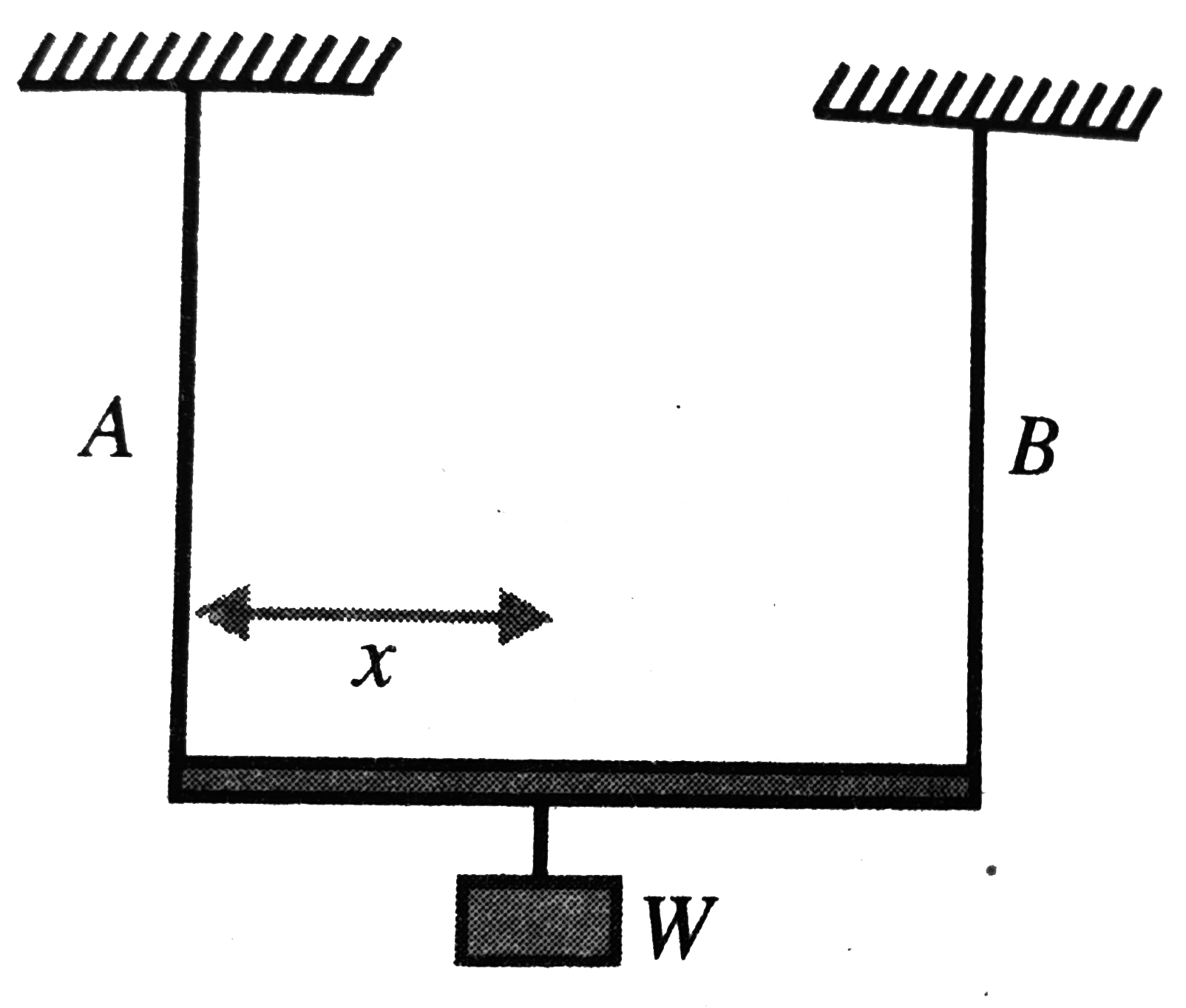
Determine the value of `x` so that equal stresses are produced in each wire.
View SolutionA light rod of length `L=2 m` is suspended horizontally from the ceiling by two wires `A` and `B` of equal lengths. The wire `A` is made of steel with the area of cross section `A_(S)=1xx10^(-5)m^(2),` while the wire `B` is made of brass of cross sectional area `A_(b)=2xx10^(-5)m^(2).` A weight `W` is suspended at a distance `x` from the wire `A` as shown in figure.
Take, Young's modulus of steel and brass as `Y_(s)=2xx10^(11)Nm^(-2)` and `Y_(b)=1xx10^(11)Nm^(-2)`.

Determine the value of x so that equal strains are produced in each wire
View SolutionA lead sphere of `1.0 mm` diameter and relative density `11.20` attains a terminal velocity of `0.7 cm s^(-1)` in a liquid of relative density `1.26`.
Determine the coefficient of dynamic viscosity of the liquid.
View SolutionA lead sphere of `1.0 mm` diameter and relative density `11.20` attains a terminal velocity of `0.7 cm s^(-1)` in a liquid of relative density `1.26`.
What is the value of the Reynolds number?
View SolutionA long capillary tube of radius `0.2 mm` is placed vertically inside a beaker of water.
If the surface tension of water is `7.2xx10^(-2)N//m` the angle of contact between glass and water is zero, then determine the height of the water column in the tube.
View SolutionA long capillary tube of radius `0.2 mm` is placed vertically inside a beaker of water.
If the tube is now pushed into water so that only `5.0 cm` of its length is above the surface, then determine the angle of contact between the liquid and glass surface.
View SolutionAn oil of relative density `0.9` and viscosity `0.12 kg//ms` flows through a `2.5 cm` diameter pipe with a pressure drop of `38.4 kN//m^(2)` in a length of `30 m`. Determine
Determine the discharge
View SolutionAn oil of relative density `0.9` and viscosity `0.12 kg//ms` flows through a `2.5 cm` diameter pipe with a pressure drop of `38.4 kN//m^(2)` in a length of `30 m`. Determine
Determine the shear stress at the pipe wall
View SolutionAn oil of relative density `0.9` and viscosity `0.12 kg//ms` flows through a `2.5 cm` diameter pipe with a pressure drop of `38.4 kN//m^(2)` in a length of `30 m`. Determine
Determine the power required to maintain the flow
View SolutionA steel bolt of cross-sectional area `A_(b) = 5 xx 10^(-5) m^(2)` is passed through a cylindrical tube made of aluminium. Cross-sectional area of the tube material is `A_(t)= 10^(-4) m^(2)` and its length is` l = 50 cm`. The bolt is just taut so that there is no stress in the bolt and temperature of the assembly increases through `/_\theta=10^@C`. Given, coefficient of linear thermal expansion of steel, `alpha_(b) = 10^(-5)//^@C`.
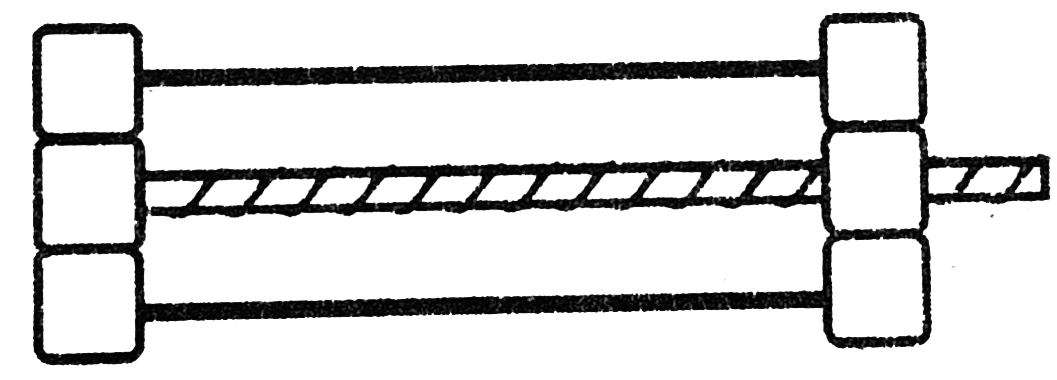
Young's modulus of steel `Y_(b)=2xx10^(11)N//m^(2)`
Young's modulus of `Al, Y_(t)=10^(11) N//m^(2)`, coefficient of linear thermal expansion of `Al alpha_(t)=2xx10^(-5)//^@C`
The compressive strain in tube is
View SolutionA steel bolt of cross-sectional area `A_(b) = 5 xx 10^(-5) m^(2)` is passed through a cylindrical tube made of aluminium. Cross-sectional area of the tube material is `A_(t)= 10^(-4) m^(2)` and its length is` l = 50 cm`. The bolt is just taut so that there is no stress in the bolt and temperature of the assembly increases through `/_\theta=10^@C`. Given, coefficient of linear thermal expansion of steel, `alpha_(b) = 10^(-5)//^@C`.
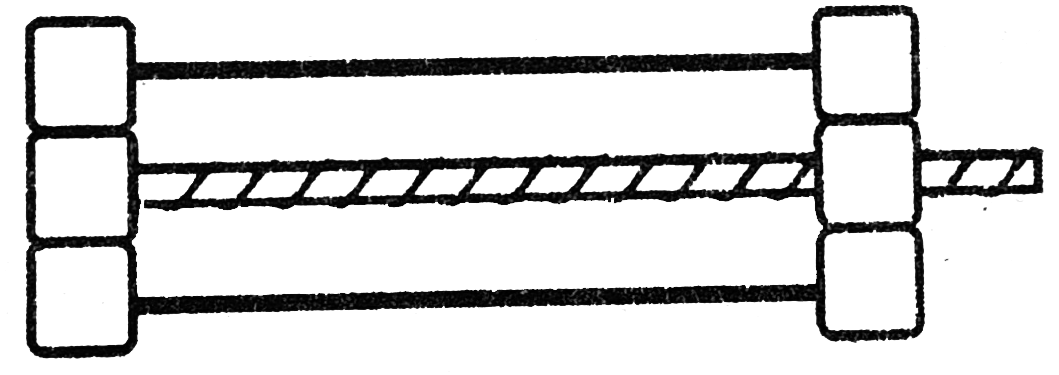
Young's modulus of steel `Y_(b)=2xx10^(11)N//m^(2)`
Young's modulus of `Al, Y_(t)=10^(11) N//m^(2)`, coefficient of linear thermal expansion of `Al `alpha_(t)=2xx10^(-5)//^@C`
The compressive stress in tube is
View SolutionA steel bolt of cross-sectional area `A_(b) = 5 xx 10^(-5) m^(2)` is passed through a cylindrical tube made of aluminium. Cross-sectional area of the tube material is `A_(t)= 10^(-4) m^(2)` and its length is` l = 50 cm`. The bolt is just taut so that there is no stress in the bolt and temperature of the assembly increases through `/_\theta=10^@C`. Given, coefficient of linear thermal expansion of steel, `alpha_(b) = 10^(-5)//^@C`.
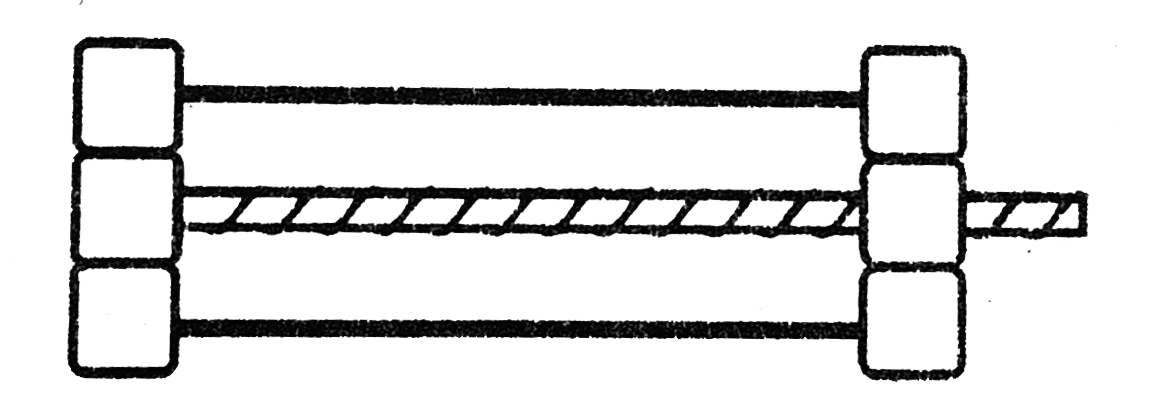
Young's modulus of steel `Y_(b)=2xx10^(11)N//m^(2)`
Young's modulus of `Al, Y_(t)=10^(11) N//m^(2)`, coefficient of linear thermal expansion of `Al alpha_(t)=2xx10^(-5)//^@C`
The tensile stress in bolt is
View SolutionOn gradual loading , stress - strain relationship for a metal wire is as follows . Within proportionality limit , stress `prop` strain or, ` "Stress"/"strain"` = a constant for the material of wire.
Two wires of same material have length and radius `(L,r)` and `(2L , r/2)`. The ratio of their young's moduli is
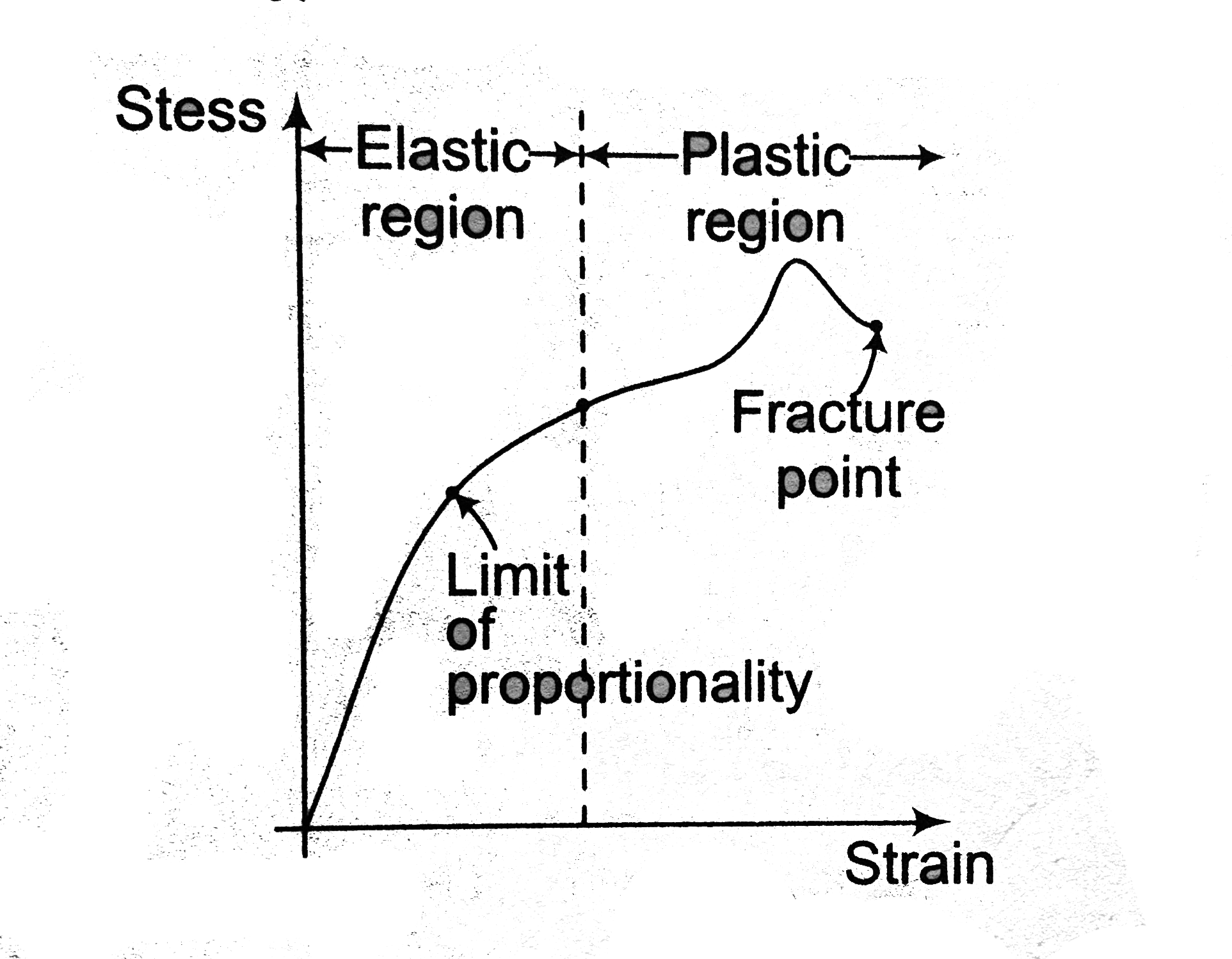
View SolutionOn gradual loading , stress - strain relationship for a metal wire is as follows . Within proportionality limit , stress proportional to strain or, `"Stress"/"strain"` = a constant for the material of wire.
Just on crossing the yield region, the material will have
View SolutionAccording to Hooke's law, within the elastic limit stress/strain `=` constant. This constant depends on the type of strain or the type of force acting. Tensile stress might result in compressional or elongative strain, however, a tangential stress can only cause a shearing strain. After crossing the elastic limit, the material undergoes elongation and beyond a stage beaks. All modulus of elasticity are basically constants for the materials under stress.
If stress/strain is `x` in elastic region and `y` in the region of yield, then
View SolutionMolecular forces exist between the molecules of a liquid in a container. The molecules on the surface have unequal force leading to a tension on the surface. If this is not compensated by a force, the equilibrium of the liquid will be a difficult task. This leads to an excess pressure on the surface. The nature of the meniscus can inform us of the direction of the excess pressure. The angle of contact of the liquid decided by the forces between the molecules, air and container can make the angle of contact.
The direction of the excess pressure in the meniscus of a liquid of angle of contact `2pi//3` is
View SolutionMolecular forces exist between the molecules of a liquid in a container. The molecules on the surface have unequal force leading to a tension on the surface. If this is not compensated by a force, the equilibrium of the liquid will be a difficult task. This leads to an excess pressure on the surface. The nature of the meniscus can inform us of the direction of the excess pressure. The angle of contact of the liquid decided by the forces between the molecules, air and container can make the angle of contact.
If the excess pressure in a soap bubble is `p`, the excess pressure in an air bubble is
View SolutionMolecular forces exist between the molecules of a liquid in a container. The molecules on the surface have unequal force leading to a tension on the surface. If this is not compensated by a force, the equilibrium of the liquid will be a difficult task. This leads to an excess pressure on the surface. The nature of the meniscus can inform us of the direction of the excess pressure. The angle of contact of the liquid decided by the forces between the molecules, air and container can make the angle of contact.
In a meniscus of radius `r`, with excess pressure p in atmospheric pressure `p_(0)`, the force experienced is
View SolutionMaterials get deformed when force is applied. Some of them regain their status when the applied force is removed. They are termed as elastic. Those of which not regaining are called plastic. There may be delay in the regaining in some materials. They are said to have got elastic aftereffect, since they have gone beyond the elastic limit. Repeated application and removal of force leads to fatigueness in the material. Fatigued materials may break at any point time and so are avoided.
The stress strain graph for two materials `A` and `B` is shown in the following figure:

If the intensity of `A` and `B` is `E_(A)` and `E_(B)`, respectively
View SolutionMaterials get deformed when force is applied. Some of them regain their status when the applied force is removed. They are termed as elastic. Those of which not regaining are called plastic. There may be delay in the regaining in some materials. They are said to have got elastic aftereffect, since they have gone beyond the elastic limit. Repeated application and removal of force leads to fatigueness in the material. Fatigued materials may break at any point time and so are avoided.
The stress strain graph for two materials `A` and `B` is shown in the following figure:

The strength of the material `A` and `B` is `S_(A)` and `S_(B)`, respectively, while the longevity of plastic behaviour is `L_(A)` and `L_(B)`. Then
View SolutionMaterials get deformed when force is applied. Some of them regain their status when the applied force is removed. They are termed as elastic. Those of which not regaining are called plastic. There may be delay in the regaining in some materials. They are said to have got elastic aftereffect, since they have gone beyond the elastic limit. Repeated application and removal of force leads to fatigueness in the material. Fatigued materials may break at any point time and so are avoided.
The stress strain graph for two materials A and B is shown in the following figure:
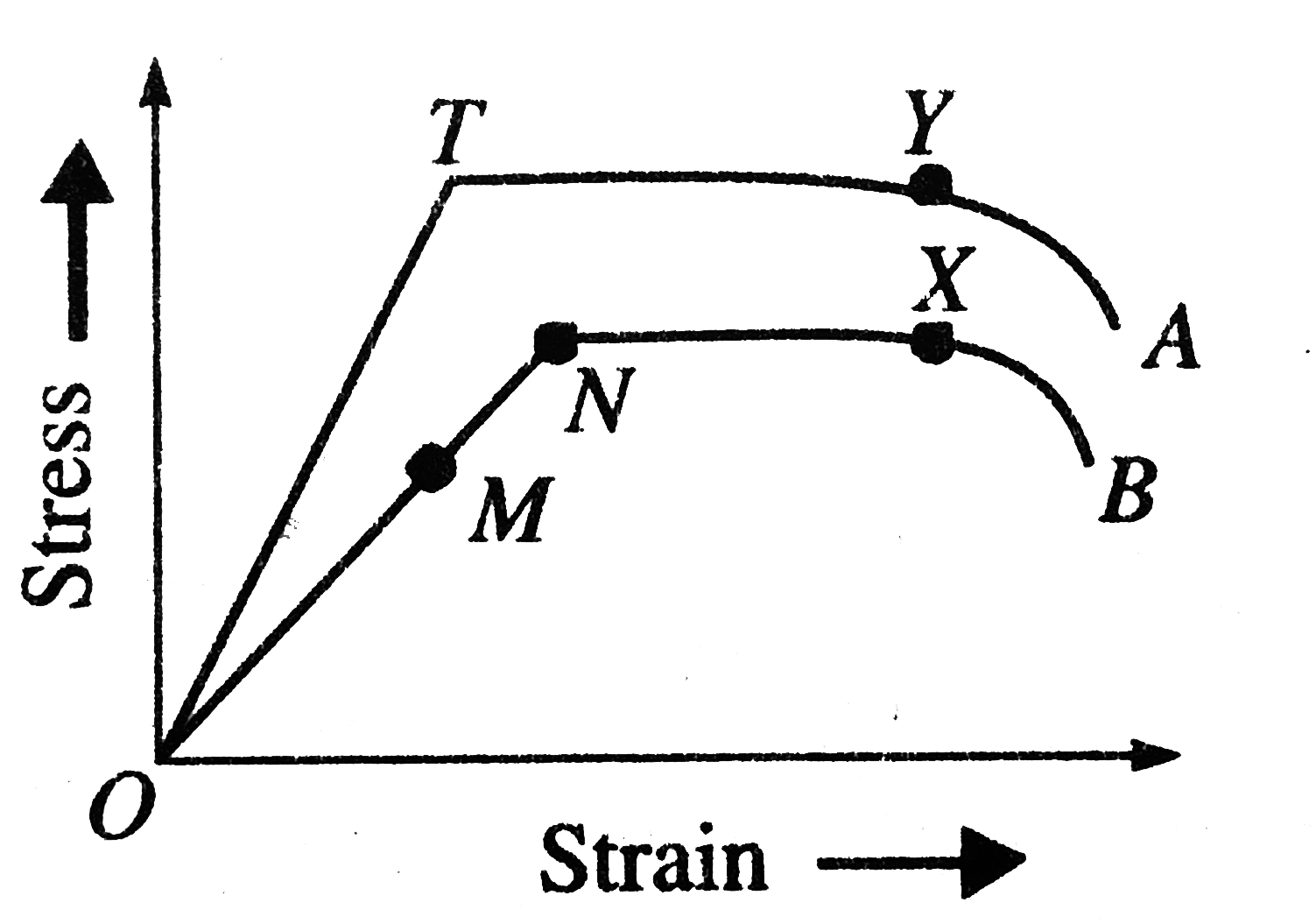
The time in which the two materials regain their original status is `t_(A)` and `t_(B)` related as `t_(B)=2t_(B)`. Then the material under elastic aftereffect (relatively) is
View SolutionFigure shows a capillary tube of radius r dipped into water. If the atmosphere pressure is `P_0`, the pressure at point A is
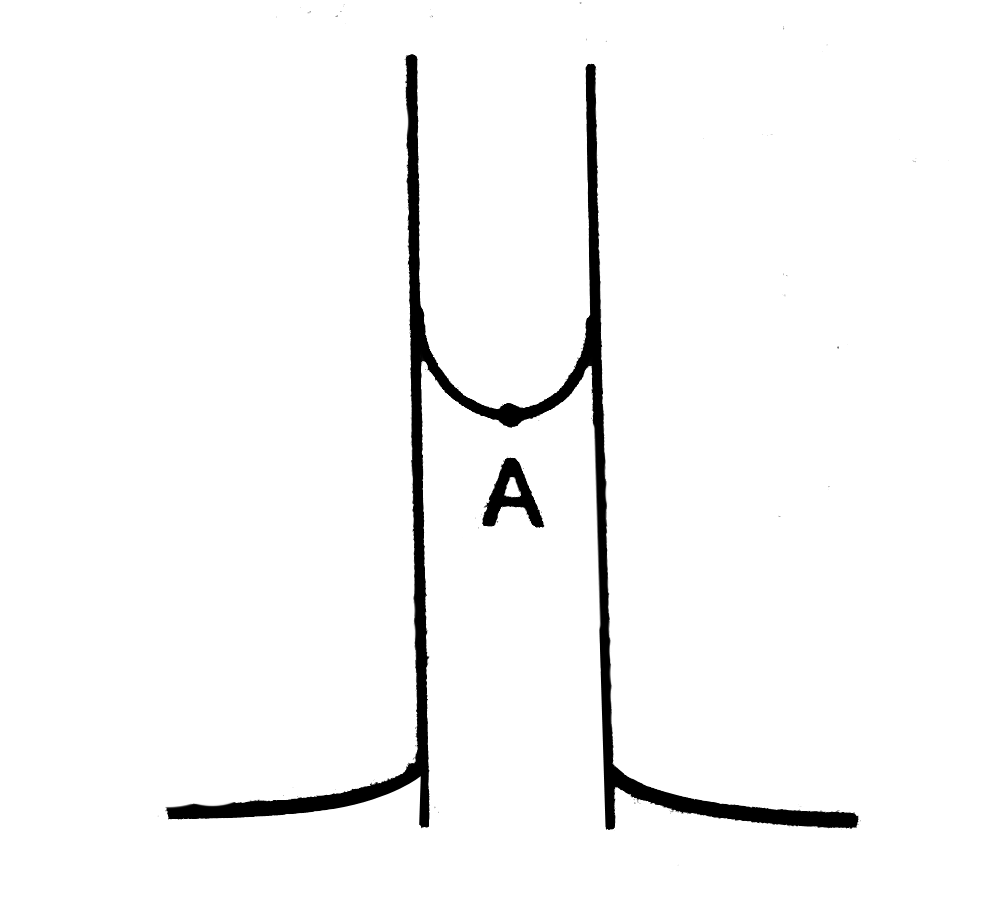
View SolutionFigure shows a capillary tube of radius r dipped into The atmospheric pressure is `P_(0)` and the capillary rise of water is `h`. `s` is the surface tension for water-glass.

Initially, `h = 10 cm`. If the capillary tube is now incline at `45^@,` the length of water rising in the tube will be
View SolutionFigure shows a capillary tube of radius r dipped into The atmospheric pressure is `P_(0)` and the capillary rise of water is `h`. `s` is the surface tension for water-glass.

Initially, `h = 10 cm`. If the capillary tube is now incline at `45^@`, the length of water rising in the tube will be
View SolutionIn the figure shown, `A` and `B` are two short steel rods each of cross-sectional area `5 cm^(2)`. The lower ends of `A` and `B` are welded to a fixed plate `CD`. The upper end of `A` is welded to the `L`-shaped piece `EFG`, which can slide without friction on upper end of `B`. A horizontal pull of `1200 N` is exerted at `G` as shown. Neglect the weight of `EFG`.

Mark out the correct statement(s).
View SolutionIn the figure shown, `A` and `B` are two short steel rods each of cross-sectional area `5 cm^(2)`. The lower ends of `A` and `B` are welded to a fixed plate `CD`. The upper end of `A` is welded to the `L`-shaped piece `EFG`, which can slide without friction on upper end of `B`. A horizontal pull of `1200 N` is exerted at `G` as shown. Neglect the weight of `EFG`.

Longitudinal stress in `A` is
View SolutionIn the figure shown, `A` and `B` are two short steel rods each of cross-sectional area `5 cm^(2)`. The lower ends of `A` and `B` are welded to a fixed plate `CD`. The upper end of `A` is welded to the `L`-shaped piece `EFG`, which can slide without friction on upper end of `B`. A horizontal pull of `1200 N` is exerted at `G` as shown. Neglect the weight of `EFG`.

Longitudinal stress in `B` is
View SolutionTwo opposite forces`F_(1) = 120 N` and `F_(2) = 80 N` act on an elastic plank of modulus of elasticity `Y= 2 x 10^(11) N//m^(2)` and length `l=1m` placed over a smooth horizontal surface. The cross-sectional area of the plank is `S = 0.5 m^(2)`. The change in length of the plank is `x xx 10^(-11)m`. Find the value of `x`.

View SolutionA ring of radius `r` made of wire of density `rho` is rotated about a stationary vertical axis passing through its centre and perpendicular to the plane of the ring as shown in the figure. Determine the angular velocity (in rad/s) of ring at which the ring breaks. The wire breaks at tensile stress `sigma`. Ignore gravity. Take `sigma//rho = 4` and `r= 1 m.`
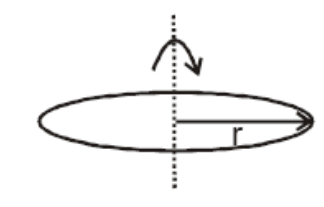
View SolutionA cube of side a and mass on just floats on the surface of water as shown in the figure. The surface tension and density of water are `T` and `rho_(w)` respectively. If angle of contact between cube and water surface is zero, find the distance `h` (in metres) between the lower face of cube and surface of the water.
(Take `m=1kg, g=10ms^(-12), aT=10/4` unit and `rho_(w)a^(2)g=10` unit)

View Solution
Linked Comprehension questions and complete solutions for chapter PROPERTIES OF SOLIDS AND FLUIDS of CENGAGE PHYSICS (HINGLISH) of Class 11